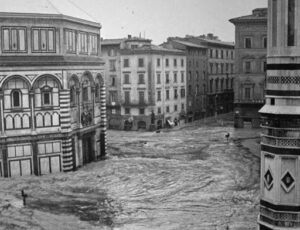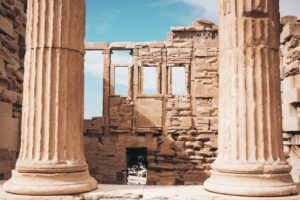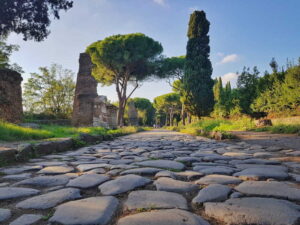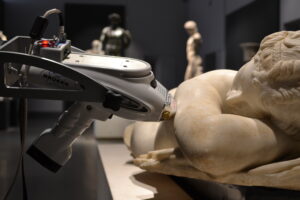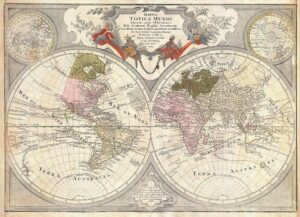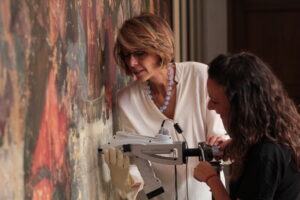ISPC: from its origin to its evolution
To draw a timeline that leads to the Institute of Heritage Science (ISPC) of the National Research Council of Italy (CNR) 's birth, it is necessary to start from the Constitution of the Italian Republic.
With the article 9, among its fundamental principles, Italy declares that "The Republic promotes the development of culture and scientific and technical research. It safeguards natural landscape and the historical and artistic heritage of the Nation" and recognises the value and role of scientific research and cultural heritage for the cultural, social and economic development of the whole Nation.
The need to talk about Cultural Heritage
Over the years, several international historical events bring the need to deal with the safeguarding of Cultural Heritage to the fore. For the first time, the concept of Cultural Heritage was used by article 1 of the 1954 Hague Convention for “the protection of Cultural Heritage in the event of armed conflict”.
Every kind of evidence having the value of civilisation
Ten years after the Hague Convention, in Italy the Investigation Commission for the protection and enhancement of the historical, archaeological, artistic and landscape heritage (chaired by F. Franceschini), opened the way for reform measures, introducing the notion of Cultural Heritage such as "every kind of evidence having the value of civilisation". The new notion unified the pre-existing regulatory concepts at the beginning of the century, which conceived Cultural Heritage as "things" of historical, artistic, archaeological and natural beauty interest.
The outstanding science's contribution to Cultural Heritage
Under this new vision of Cultural Heritage, the multidisciplinary sensibility of the CNR promptly reacted. For instance, the significant contribution of Professor Franco Piacenti, one of the leading figures of the CNR, who secured heritage buildings damaged by the 1966 flood of the Arno in Florence. That dramatic event drove profound change and innovation in conservation practice and marked the beginning of a promising dialogue between science and cultural heritage.
Scientific research on cultural heritage has spread thanks to specialised CNR study centres established throughout the Italian peninsula. In 1968, two new study centres were founded in Rome: the Study Centre for Etruscan-Italian Archaeology by Massimo Pallottino and the Centre for Mycenaean and Aegean-Anatolian Studies by Giovanni Pugliese Carratelli, Piero Meriggi and Carlo Gallavotti. In 1969, Sabino Moscati founded the Study Centre for Phoenician and Punic civilisation, in Montelibretti.
In 1970, after the 1966 flood in Florence, Professor F. Piacenti, member of the CNR Chemistry Advisory Committee, in agreement with Professor Gino Bozza, rector of the Politecnico di Milano and member of the CNR Engineering and Architecture Advisory Committee, promoted the establishment of three Study Centres on the Causes of Decay and Conservation of the Artworks located in Milan, Florence and Rome.
During this period of twenty years, scientific research on archaeology both on tangible and intangible Cultural Heritage accelerated thanks to the establishment, within the CNR, of numerous scientific research institutes on Cultural Heritage. In 1970, the Institute for Etruscan-Italian archaeology was born in Rome, acquiring the studies of the Centre for Etruscan-Italian archaeology (1968).
In 1978, in the same city, an operational unit of the CNR, named Service for Subsidiary Sciences of Archaeology, provided technological and scientific services to archaeological and cultural heritage study. Shortly after, in 1981, the unit became the Institute for Technologies Applied to Cultural Heritage (ITABC).
In 1982, the Institute for Phoenician and Punic Civilisation was established in Montelibretti, thanks to the activities of the Study Centre for Phoenician and Punic Civilization (1969).
In Southern Italy, in 1984, the CNR Centre for Greek Archaeology was founded, in Sicily, by Giovanni Rizza at the University of Catania.
During 1988, the Institute for the conservation of monumental works was born in Lecce, and the International Institute of Frederician Studies took shape in Potenza.
In the same year, the Committee for Science and Technology of Cultural Heritage, established by CNR, carried out a significant action of coordination and propulsion for research activities in the field of Cultural Heritage.
A significant strategic national impact came with the "Cultural Heritage" focused project (Progetto Finalizzato), approved on June 28, 1995, with a funding of 115 billion in five years (1996-2000). The main objective of the project was to create a systematic and coordinated approach to increase the use of science and available innovative technological resources and to improve the knowledge and enhancement of the artistic and archaeological heritage of Italy.
In 2001, CNR started a long reorganisation process of both its Study Centres and the institutes involved in the field of Cultural Heritage. So, the Institute for the Conservation and Enhancement of Cultural Heritage (ICVBC) based in Florence, Rome and Milan, resulted from the union of the three CNR Study Centres on the Causes of Decay and Conservation of the Artworks (1970).
The Institute for Studies on Italian and Ancient Mediterranean Civilisations (ISCIMA) was established from the union of the Institute for Etruscan-Italic Archaeology (1970), located in Rome and the Institute for Civilization Phoenician and Punic (1982), based in Montelibretti.
The Institute of Studies on Aegean and Near Eastern Civilizations (ICEVO) was born in Rome, thanks to the activities of the Centre of Mycenaean and Aegean-Anatolian Studies, founded in 1968.
During 2001, the Institute for Archaeological and Monumental Heritage (IBAM) resulted from the union of the Study Centre on Greek Archaeology (1984) in Catania, the Institute for the conservation of monumental works (1988) in Lecce and the International Institute of Frederician Studies (1988) in Potenza.
Suggestions for improvements of scientific research on Cultural Heritage were identified within the concept of Heritage Science. Used for the first time by the UK House of Lords Science and Technology Committee in 2006, Heritage Science is a field of multi- and interdisciplinary studies connecting, as a bridge, the so-called "two cultures", science and the humanities producing fertile of cognitive, cultural and economic outcomes.
During another phase of CNR reorganisation in 2003, the Institute of Studies on the Ancient Mediterranean (ISMA) was born in Montelibretti from the union of the Institute of Studies on Italian and Ancient Mediterranean Civilisations (ISCIMA) and the Institute of Studies on the Civilisations of the 'Aegean and Near East (ICEVO), both founded in 2001.
On October 1, 2019, CNR decided to create a unique institute by merging the Institute for Technologies Applied to Cultural Heritage (ITABC), the Institute for the Conservation and Enhancement of Cultural Heritage (ICVBC), the Institute for Archaeological and Monumental Heritage (IBAM), the Institute of Studies on the Ancient Mediterranean (ISMA), the four Institutes of the Department of Human and Social Sciences, Cultural Heritage (DSU). The Institute of Heritage Science (ISPC) is the new institute born as a reference point for the National, European and International scientific community, to face the challenges posed today by the Heritage Science.



